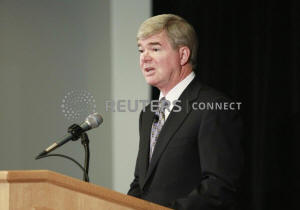|
"College athletes are college students, and you
can't have college sports if you don't have college (campuses)
open and having students on them," Emmert said. "You don't want
to ever put student-athletes at greater risk than the rest of
the student body."
Emmert added of Division I universities, "All of the
commissioners and every president that I've talked to is in
clear agreement: If you don't have students on campus, you don't
have student-athletes on campus.
"That doesn't mean it has to be up and running in the full
normal model, but you've got to treat the health and well-being
of the athletes at least as much as the regular students. So if
a school doesn't reopen, then they're not going to be playing
sports. It's really that simple."
Also on the Twitter discussion, the NCAA's chief medical
officer, Dr. Brian Hainline, emphasized the importance of
testing for COVID-19 and tracing the contacts of those with the
virus.
"There has to be a good sense of surveillance, and that really
has to be at the campus level, the regional level," Hainline
said. "So if we're going to start opening up society, we need to
know that means. That's what surveillance is all about. We need
to improve the infrastructure for that.
"And then finally the testing is going to be really important.
... What does testing really mean? How often does it have to be
done -- especially if you're in a contact sport where the
athletes are close to one another. So the testing component --
especially getting a rapid-diagnostic test on the one hand and
then understanding immunity on the other -- that's going to have
to really improve over the next several weeks."
The NCAA shut down all winter-sports championships in mid-March
due to the pandemic, then ultimately scrapped all spring sports.
--Field Level Media
[© 2020 Thomson Reuters. All rights
reserved.] Copyright 2020 Reuters. All rights reserved. This material may not be published,
broadcast, rewritten or redistributed.
Thompson Reuters is solely responsible for this content.
 |
|






